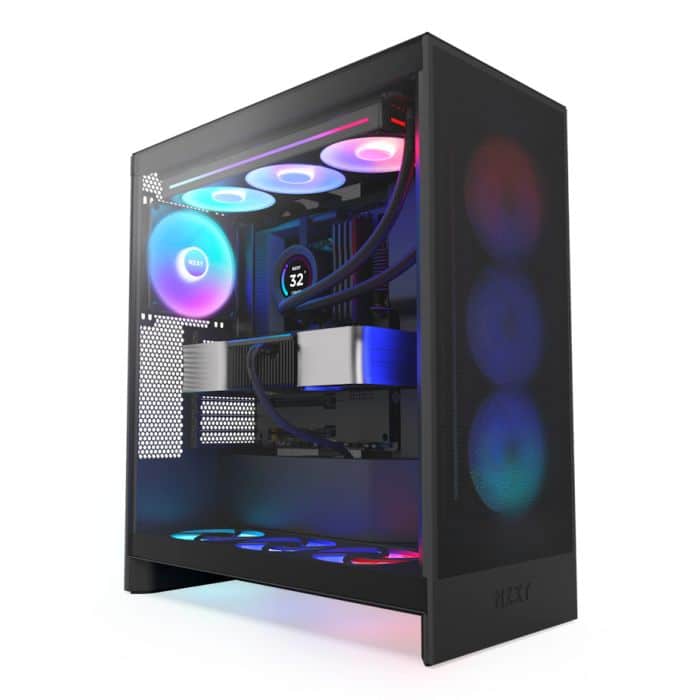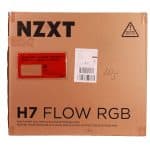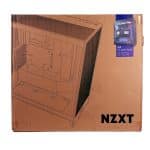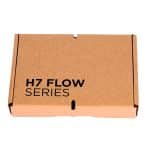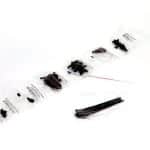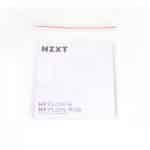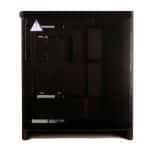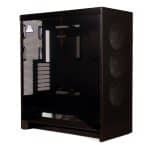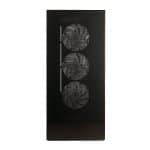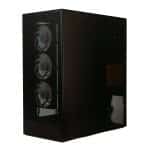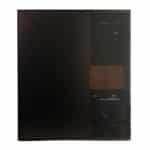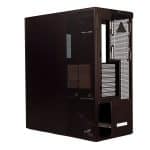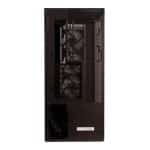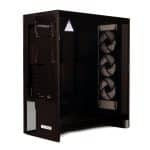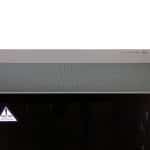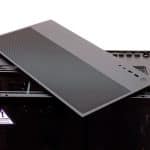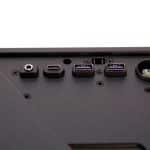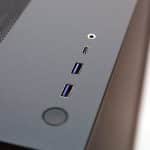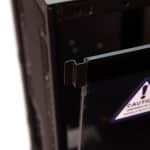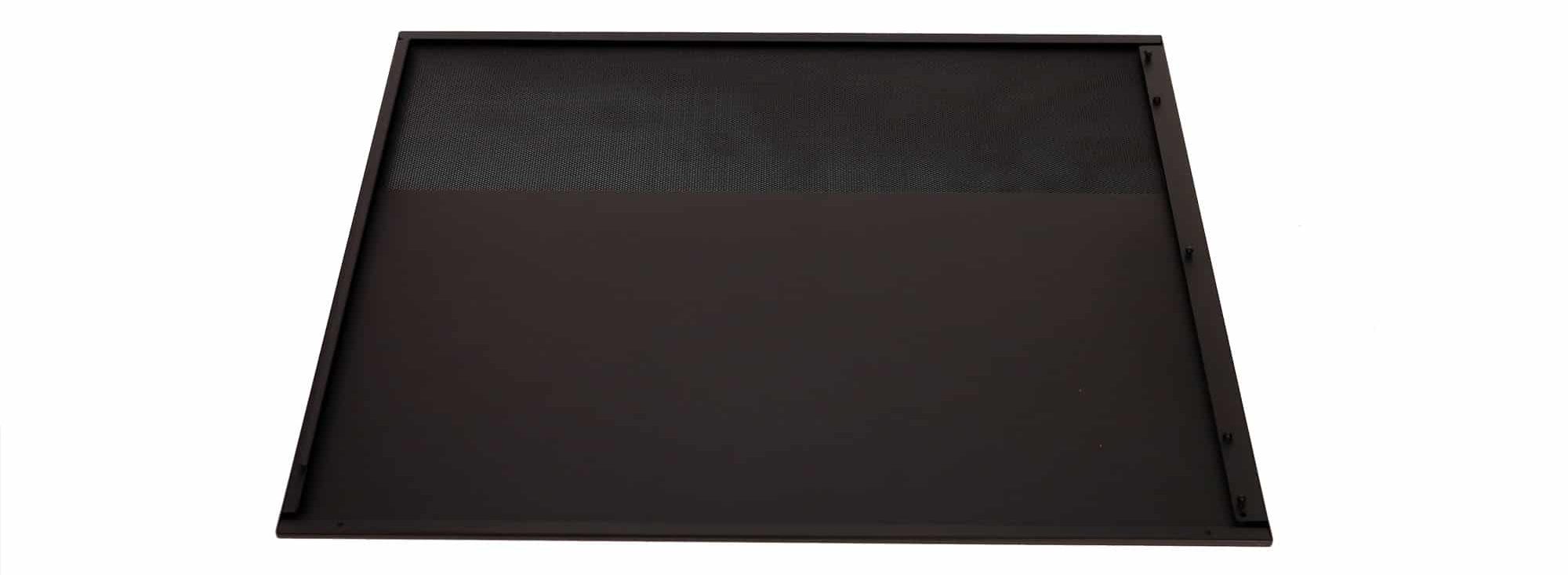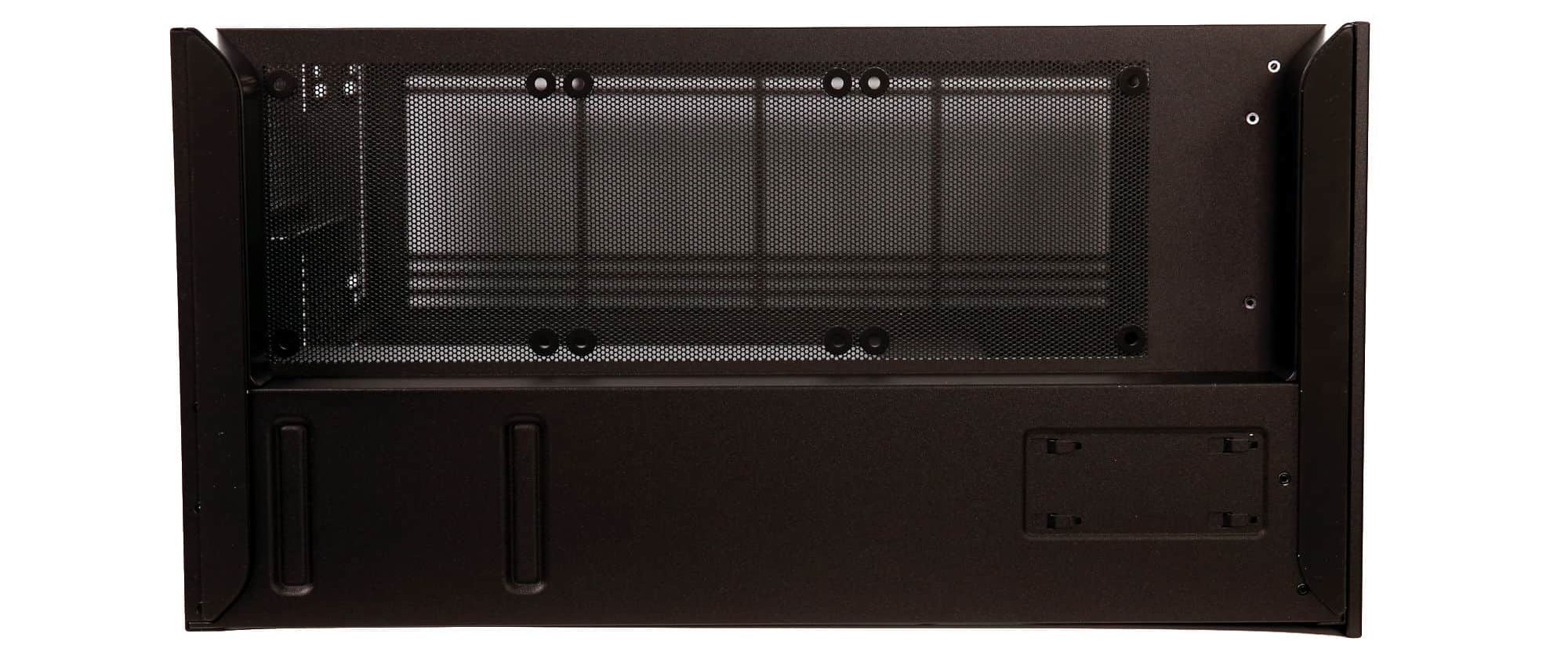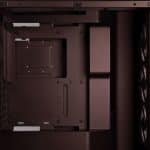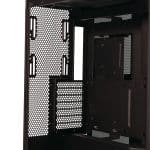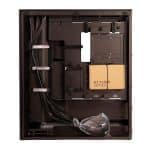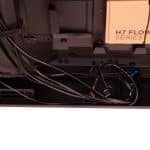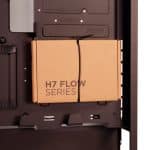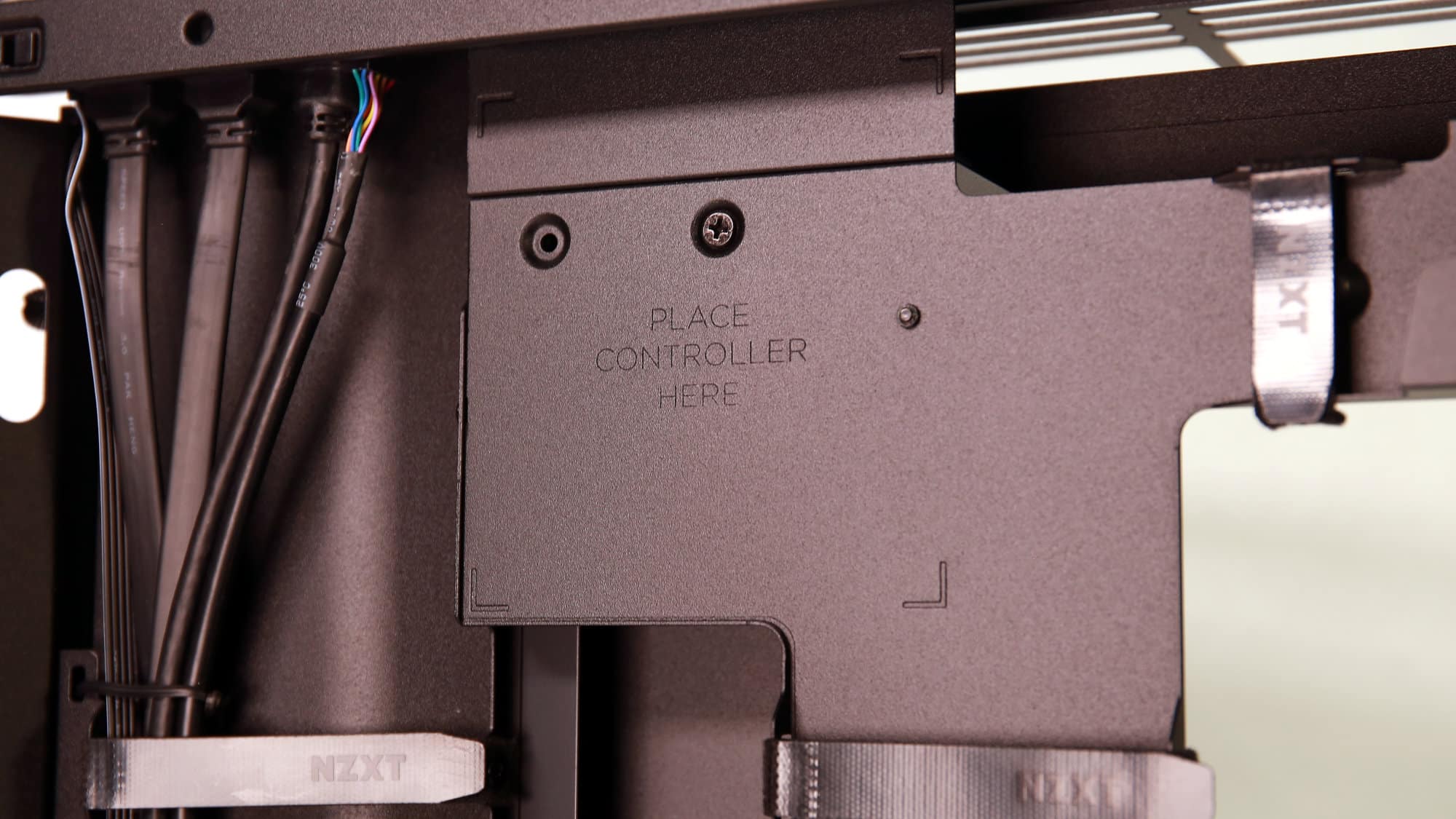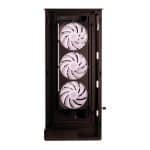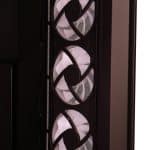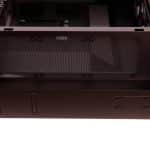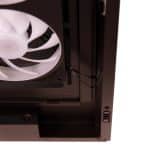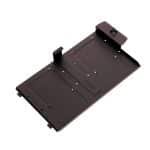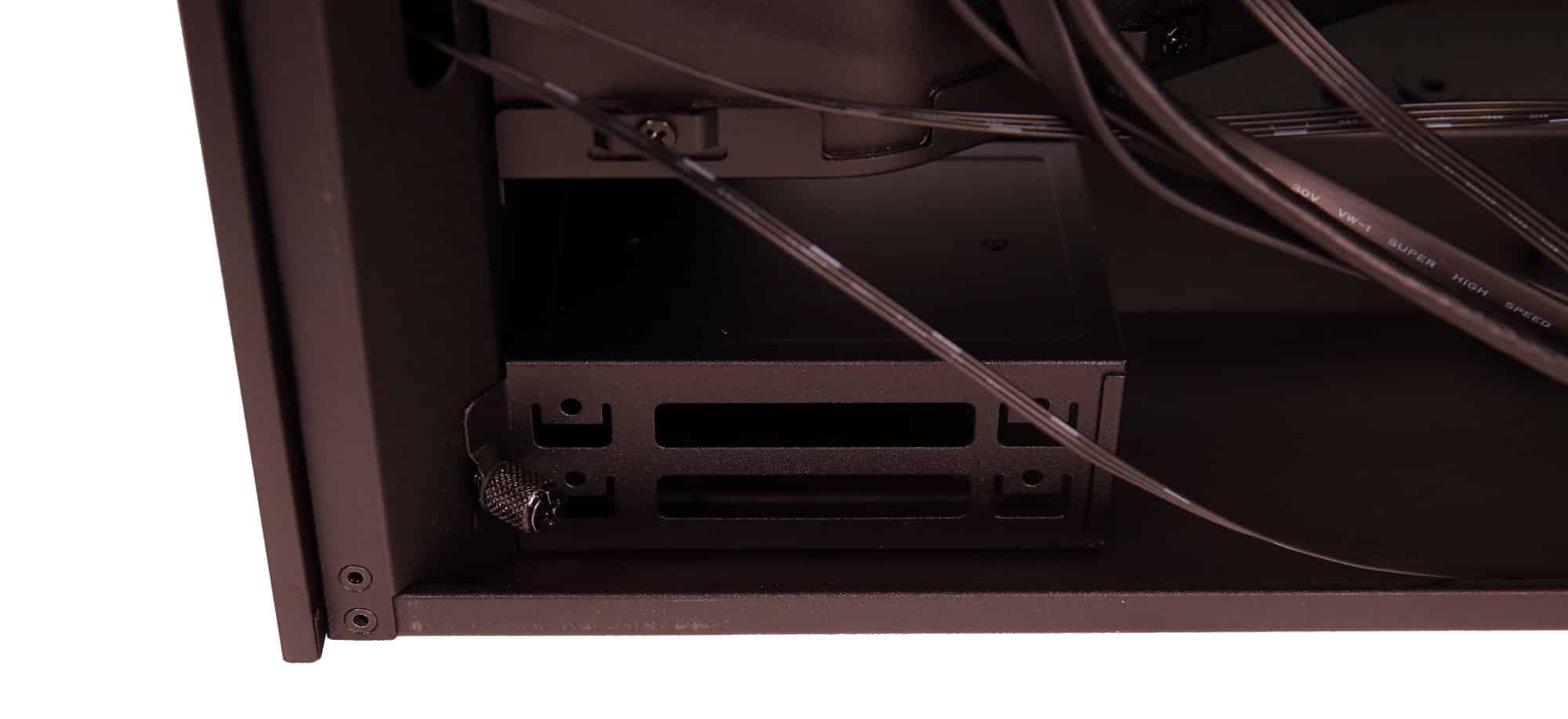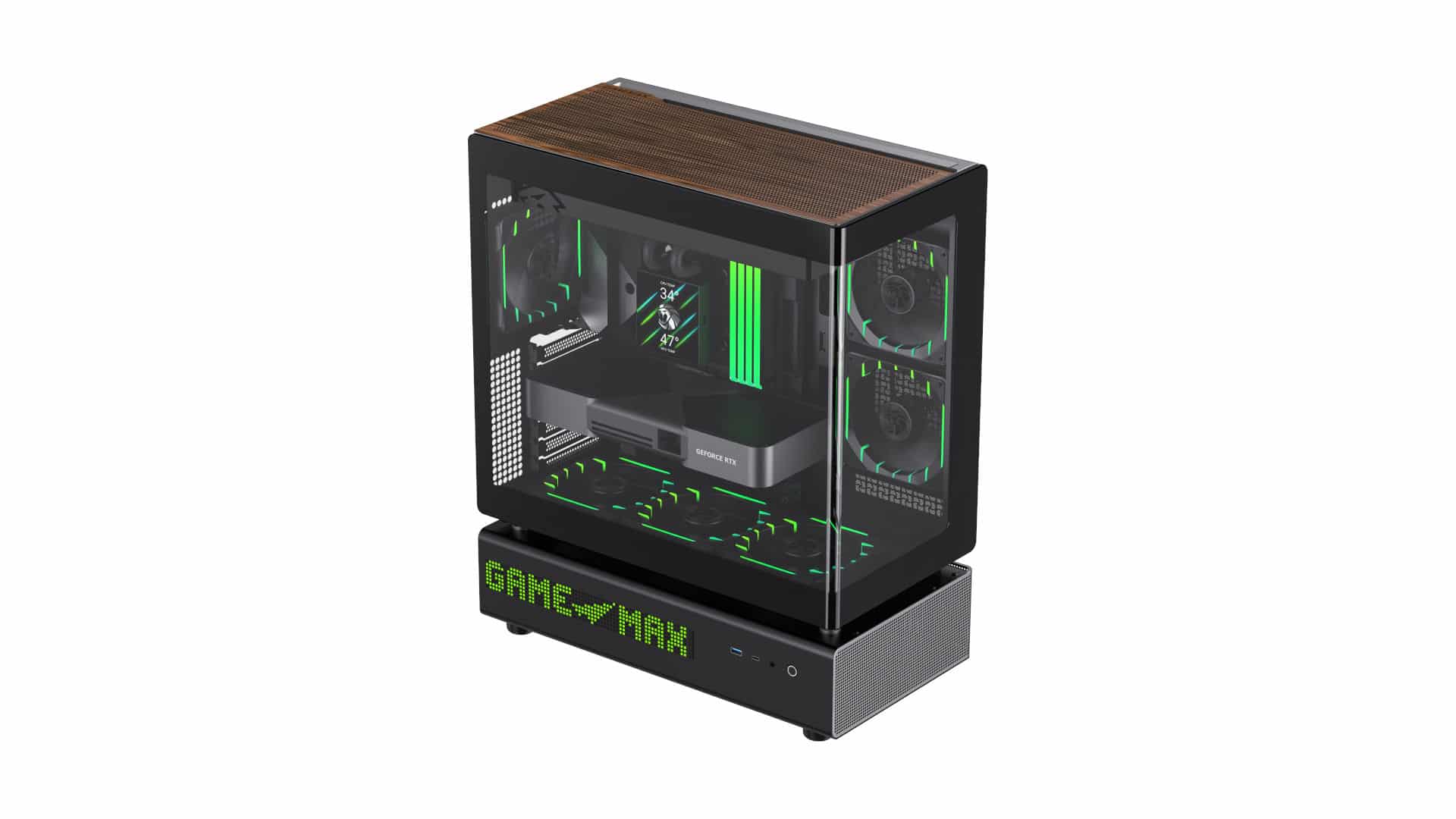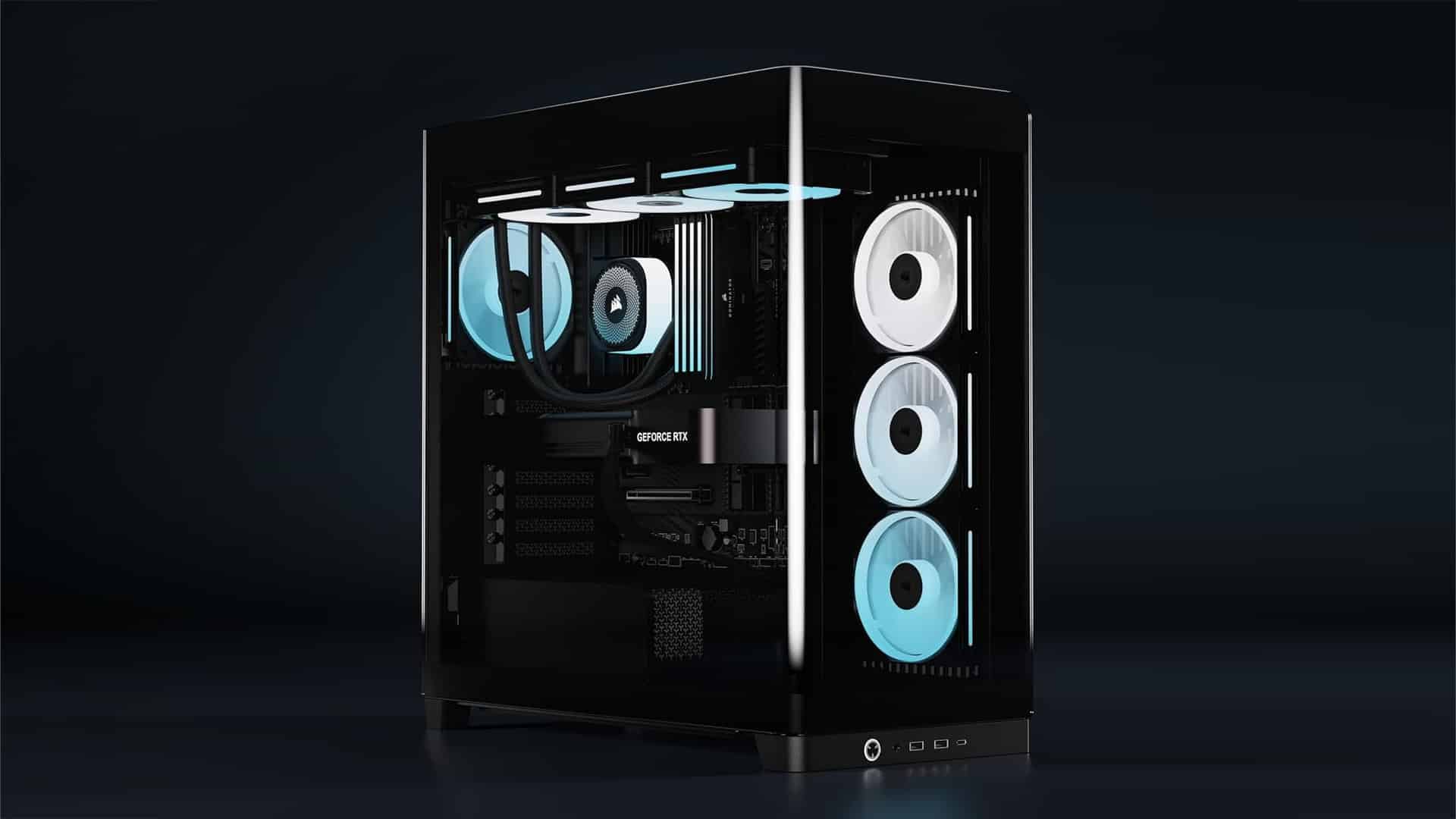Unboxing and First Impressions
The case arrives in a single box, well-protected by four foam pieces and wrapped in a plastic bag, with a piece of cardboard sandwiched in for extra protection. The packaging is simple yet effective, ensuring the chassis arrives at your doorstep without a scratch.
Right out of the box, this chassis makes a bold statement. It has a raw yet refined look, minimalist, but not unfinished. One of the first things you’ll notice is the sheer size. For a mid-tower case, it’s big. The size difference is noticeable compared to other mid-tower chassis we’ve reviewed, with a few exceptions, such as the full ATX 901 from be quiet! or the HAVN HS420. Although this model sits at a lower price point than those high-end cases, it feels like it belongs in the same league in terms of presence and build.
Design and Build Quality
The aesthetics of the H7 Flow RGB (2024) are minimalist, and its large volume lends a striking appearance. Large flat panels, precisely machined ventilation openings, and a premium finish make the H7 appear somewhat exotic among the modern, RGB-infested, and aggressively styled chassis options.
The front of the chassis is mostly perforated, allowing the fans behind it unrestricted access to airflow. The panel itself looks quite premium, and the finish is of high quality.
The top of the chassis follows a similar design, providing ventilation from front to back, with the I/O situated toward the front of the device. It features two USB Type-A ports, one USB Type-C port, a combo audio jack, and a power button. NZXT is adhering to its minimalist design philosophy even in I/O port selection, but whether that’s good or not is up to you. That said, once you remove the top panel, you’ll immediately appreciate the artistry involved in fitting the ports and button seamlessly around the punched-out holes of the I/O panel.
The side panel is made entirely of glass and features a toolless design, slotting in at the bottom and clicking into place at the top. In fact, this is true for all panels!
At the rear, you’ll find the ATX PSU cutout at the bottom, seven bridgeless expansion slots, the rear I/O cutout, and fan mounting slots. Additionally, the rear is fully perforated from top to bottom.
The backside panel is made of steel and features perforations from top to bottom along the rear edge of the chassis.
At the bottom, things get interesting. On the glass side, the chassis sits significantly higher off the ground to allow better access to unrestricted airflow and this is a signature design element of NZXT’s 2024 lineup. The other half of the bottom sits flush with the chassis base.
Compatibility and Space Utilization
The H7 Flow (2024) offers ample space for components, supporting up to ATX and E-ATX motherboards. To better accommodate the latter, NZXT has included a cable cover that can be screwed into two different positions or removed entirely. It supports GPUs up to 410mm in length and CPU coolers up to 185mm in height, making it suitable for high-end hardware configurations. The unique vertical power supply mount provides additional room, simplifying both cable management and component installation. This design choice not only optimizes space utilization but also improves airflow within the case.
The H7 features a unique internal layout, one that closely resembles what you’d typically find in a dual-chamber chassis. In fact, it feels a lot like the HS420 in that regard. The PSU sits vertically behind and below the motherboard’s lowest point, resulting in a small ledge that extends into the main compartment. This allows for more space for cooling along the bottom. However, the height of the PSU adds extra overall height to the chassis, which in turn enables the installation of a 420mm AIO at the front.
The space for cable management is more than sufficient, with numerous reusable straps pre-installed and several metal tabs to guide and secure cables. While it’s not the most sophisticated setup in terms of design, it’s everything you need for clean, organized cable runs. You’ll find the classic metal tabs generously placed throughout the case.
Cooling and Airflow
The H7 Flow (2024) supports up to ten fans. However, the case lacks dust filters, which could lead to dust accumulation over time. A unique touch is the dedicated fan controller area located near the top, behind the motherboard. Unfortunately, a fan controller isn’t included in the box.
NZXT offers two different front fan configurations. You can either get a triple-fan setup mounted on a single housing with one set of cables (which is what we received) or three individual fans, each with its own set of cables. Neither option includes a rear fan.
When it comes to AIO cooling, the added height of the chassis allows for a radiator of up to 420mm at the front and a 360mm radiator at the top. The bottom air intake is fairly tight, making it more suitable for fans rather than radiators. Cleaning this area could also be challenging, as the bottom panel is not removable.
Lastly, at the rear fan mount, you’ll find slots for either a 120mm or 140mm fan. Below the fan area, there’s additional venting, although it’s not currently utilized for any other purpose.
Storage Options
Given the chassis’s considerable size, the storage options are somewhat limited. Behind the motherboard, near the bottom of the chassis toward the front, you’ll find two 2.5″ drive slots tucked away.
Additionally, there’s a removable tray at the lower part of the secondary side that supports up to two drives, accommodating both 2.5″ and 3.5″ units. It’s unlikely that many users will install more than this, considering most modern motherboards now support multiple NVMe drives, and with prices so low, it’s a no-brainer. That said, we’ve seen significantly smaller chassis offering the same level of storage support.
